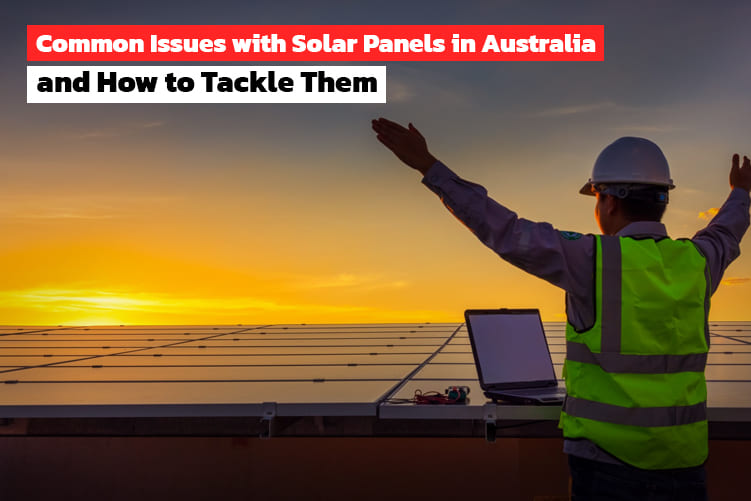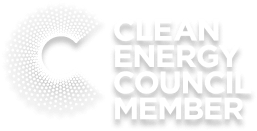Solar panels are a great way to generate clean, renewable energy for your home or business. However, like any mechanical system, they can sometimes experience problems. Here are some of the most common issues with solar panels in Australia and how to tackle them.
While solar panels are incredibly reliable, they’re not totally maintenance-free, and it’s good to be aware of the common little hiccups they might face. Think of your solar panels as a garden, they need a little looking after to stay in top shape.
The most common issues are often simple ones, like a buildup of dirt, dust, or bird droppings that can block the sun and reduce your power output. Shading from a new tree branch or a neighbor’s extension can also put a damper on things.
Fortunately, tackling these problems is usually pretty straightforward. Regular cleaning and keeping an eye on your panels is key. If you notice a drop in your energy production, it’s often a sign that a professional check-up is in order.
Getting ahead of these issues means your panels can keep happily soaking up the Australian sun, saving you money and helping the planet for years to come.
Common Issues with Solar Panels And Relevant Solution
1. Shading
Solar panel with shading issue
One of the most common problems with solar panels is shading. This can occur if trees, buildings, or other structures block sunlight from reaching the panels. Shading can significantly reduce the amount of energy produced by your solar system.
How to tackle shading:
Trim trees and shrubs. If trees or shrubs are blocking sunlight from reaching your panels, trim them back to allow more sunlight to pass through.
Consider installing micro-inverters or power optimizers. Micro-inverters and power optimizers can help to mitigate the impact of shading on individual panels. This means that even if some of your panels are shaded, the rest of your system will still be able to generate power.
2. Dust and dirt accumulation
Solar panel with dust and dirt accumulation
Dust and dirt can accumulate on the surface of your solar panels, reducing their efficiency. This is especially common in Australia, where the climate is dry and dusty.
How to tackle dust and dirt accumulation:
Clean your panels regularly. It is recommended that you clean your solar panels every 12 to 18 months. You can clean them yourself using a soft brush and mild detergent, or you can hire a professional to clean them for you.
3. Animal droppings
Solar panel with animal droppings
Animal droppings, such as bird droppings, can also accumulate on solar panels and reduce their efficiency. Unfortunately, when you have solar panels, they can sometimes become a little too popular with our feathered friends, and bird droppings can become an issue.
Think of it like this: a small, dark splotch on your panel is like a tiny, annoying cloud blocking the sun. Even a seemingly small amount of bird waste can cast a shadow that significantly reduces the amount of electricity your entire panel can produce
How to tackle animal droppings:
It’s a surprisingly common problem, but one that’s thankfully easy to solve. A little regular cleaning is all it takes to keep your panels spotless and working at their full potential, ensuring you’re getting every last bit of power from the sun.
Install bird netting or spikes. Bird netting or spikes can help to deter birds from roosting on your panels. Clean your panels regularly. If you do find animal droppings on your panels, clean them off as soon as possible.
4. Inverter faults
Solar panel inverter
Inverters are essential components of solar systems. They convert the direct current (DC) electricity produced by solar panels into alternating current (AC) electricity that can be used by your home or business. If your inverter fails, your entire solar system will stop producing electricity.
How to tackle inverter faults:
Have your inverter inspected regularly. It is recommended that you have your inverter inspected by a qualified electrician every two to three years.
Replace your inverter if it is old or damaged. Inverters typically have a lifespan of 10 to 15 years. If your inverter is old or damaged, it may need to be replaced.
5. Wiring problems
Solar panel wiring
Wiring problems can also cause problems with your solar system. These problems can be caused by a variety of factors, such as corrosion, rodents, or improper installation.
How to tackle wiring problems:
Have your wiring inspected regularly. It is recommended that you have your wiring inspected by a qualified electrician every two to three years.
Repair or replace any damaged wiring immediately. If you find any damaged wiring, have it repaired or replaced immediately to prevent further damage to your system.
6. Weather damage
Solar panel damaged by weather
Solar panels are designed to withstand harsh weather conditions, but they can still be damaged by extreme weather events such as hail, cyclones, and bushfires.
How to tackle weather damage:
Inspect your panels after severe weather events. After a severe weather event, inspect your panels for any damage.
Have any damaged panels repaired or replaced immediately. If you find any damaged panels, have them repaired or replaced immediately to prevent further damage to your system.
Conclusion:
Solar panels are a great investment for your home or business. However, it is important to be aware of the common issues that can affect them. By taking steps to prevent and address these issues, you can ensure that your solar system continues to generate clean, renewable energy for years to come.
If you have any questions about solar panels, please don’t hesitate to contact Solar Miner . We are a leading solar company in Australia and we are always happy to help.




